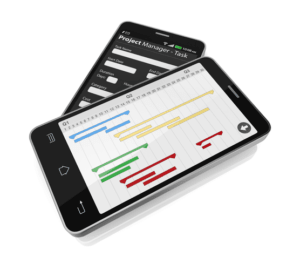Expanded Accounting Equation: Definition, Formula, and Application Financial Terms Explained

From this, you can assess how efficiently your business is turning revenues into profits and absorbing expenses. We begin with the left side of the equation, the assets, and work accounting equation expanded toward the right side of the equation to liabilities and equity. Liabilities are obligations to pay an amount owed to a lender(creditor) based on a past transaction. It is important to understand that when we talkabout liabilities, we are not just talking about loans.

Corporation Transaction C2.
When using the Expanded Accounting Equation, include all elements of the owner’s equity or stockholder’s equity, including gains, losses, and other accumulated comprehensive income, if applicable. The equation provides an application when executing simple transactions, including injecting capital into the business or purchasing assets with cash. Let’s illustrate the expanded accounting equation with an example. Let the expanded accounting equation be your guide in fraught moments like these. Examples of liabilities in an organization are loans, goods or services purchased by a consumer on credit terms and unpaid salaries to employees etc.
Rearranging the Expanded Accounting Equation Formula
Assets are the resources a business owns that have monetary value. These items represent the economic benefits a company expects to realize in the future. Assets are typically categorized as either current, if they can be converted to cash within a year, or non-current, for longer-term resources. We are going to use the expanded accounting equation to look at a real-world company.

Expanded Accounting Equation: Definition, Formula, How It Works (
- It also tells us that the company has assets of $9,900 and the only claim against those assets is the owner’s claim.
- Owner’s Equity, also known as shareholders’ equity for corporations, represents the owners’ residual claim on assets after all liabilities have been satisfied.
- For instance, a software company licensing its product over multiple years must recognize revenue gradually, reflecting the satisfaction of performance obligations.
- Expanded Accounting Equation is the advance version of basic accounting equation.
By breaking down equity into its individual components, it provides a clearer picture of the ways revenue, expenses and distributions interact with assets and liabilities. This approach highlights the interconnected nature of financial transactions and supports more detailed analysis of a business’s financial health and performance over time. The expanded accounting equation is an extension of the basic accounting equation that gives more detail about stockholders’ equity.
- The revenues and expenses show the change in net income from period to period.
- An account with a balance that is the opposite of the normal balance.
- Thedifference here is that a note typically includes interest andspecific contract terms, and the amount may be due in more than oneaccounting period.
- Equity is the residual interest in a company’s assets after deducting liabilities.
- Whether you’re a small business owner or a large corporation, understanding the expanded accounting equation can significantly improve financial management and decision-making.
- Unearned revenue represents a customer’sadvanced payment for a product or service that has yet to beprovided by the company.
How Transactions Affect the Expanded Equation
The inventory of a manufacturer should report the cost of its raw materials, work-in-process, and finished goods. The cost of inventory should include all costs necessary to acquire the items and to get them ready for sale. The 500 year-old accounting system where every transaction is recorded into at least two accounts. You should consider our materials to be an introduction to selected accounting and bookkeeping topics (with complexities likely omitted). We focus on financial statement reporting and do not discuss how that differs from income tax reporting. Therefore, you should always consult with accounting and tax professionals for assistance with your specific circumstances.
Assets – Liabilities = Share Capital + Retained Earnings
- For example, a decrease in retained earnings may indicate high dividend payouts, potentially limiting reinvestment opportunities.
- The receipt of money from the bank loan is not revenue since ASI did not earn the money by providing services, investing, etc.
- It is important to understand that when we talk about liabilities, we are not just talking about loans.
- To understand the expanded accounting equation, knowing the key components is critical.
- We are going to use the expanded accounting equation to look at a real-world company.
All three components of the accounting equation appear in the balance sheet, which reveals the financial position of a business as of the date stated on the document. The expanded accounting equation can allow analysts to https://shibrid.es/become-a-quickbooks-online-advanced-certified/ better look into the company’s break-down of shareholder’s equity. The revenues and expenses show the change in net income from period to period. Stockholder transactions can be seen through contributed capital and dividends. Although these numbers are basic, they are still useful for executives and analysts to get a general understanding of their business. The expanded accounting equation offers a comprehensive framework for understanding how financial activities impact a company’s overall financial standing.
Assets = Liabilities + Share Capital + Retained Earnings
By breaking down equity into specific components, it allows businesses to track how different transactions impact overall financial health. From revenues and expenses to owner withdrawals and dividends, this equation shows how each element contributes to the balance between assets, liabilities, and equity. Its close relationship with double-entry accounting ensures that every transaction is accurately recorded, providing transparency and reducing errors in financial reporting. Whether you’re a small business owner or a large corporation, understanding the expanded accounting equation can significantly improve financial management and decision-making. It is important to have more detailin this equity category to understand the effect on financialstatements from period to period. Thismay be difficult to understand where these changes have occurredwithout revenue recognized individually in this expandedequation.

Expanded accounting equation definition
- Anything that can be quickly liquidatedinto cash is considered cash.
- Equity increases from revenues and owner investments (stock issuances) and decreases from expenses and dividends.
- Since the amount of the increase is the same as the amount of the decrease, the accounting equation remains in balance.
- The inventory (asset) of the business will increase by the $2,500 cost of the inventory and a trade payable (liability) will be recorded to represent the amount now owed to the supplier.
If equity transactions are impactful, then the expanded accounting equation is particularly relevant to analysts. From a practical standpoint, the accounting equation helps accountants produce complete and QuickBooks Accountant accurate financial statements because it keeps all accounts in balance. If accountants want to ensure the balance sheet accounts are accurate, they can use the accounting equation and perform a high-level analysis. This is very helpful when preparing financial statements outside of an accounting software system. If financials are being prepared in Excel, mistakes can be made, and the basic accounting equation may become out of balance. Any financial transaction will affect at least two accounts in a way that the equation remains equal on both sides.
